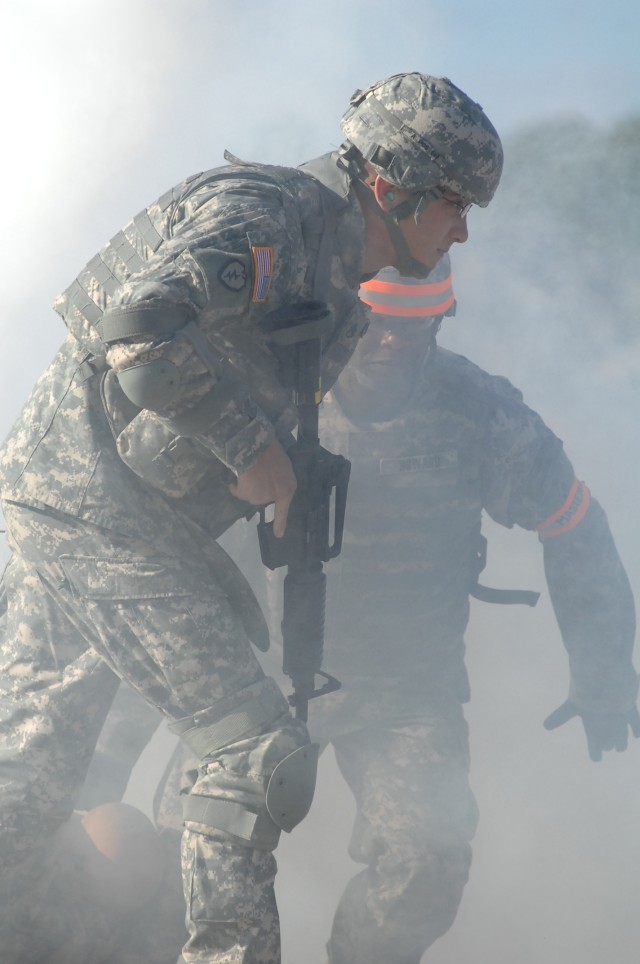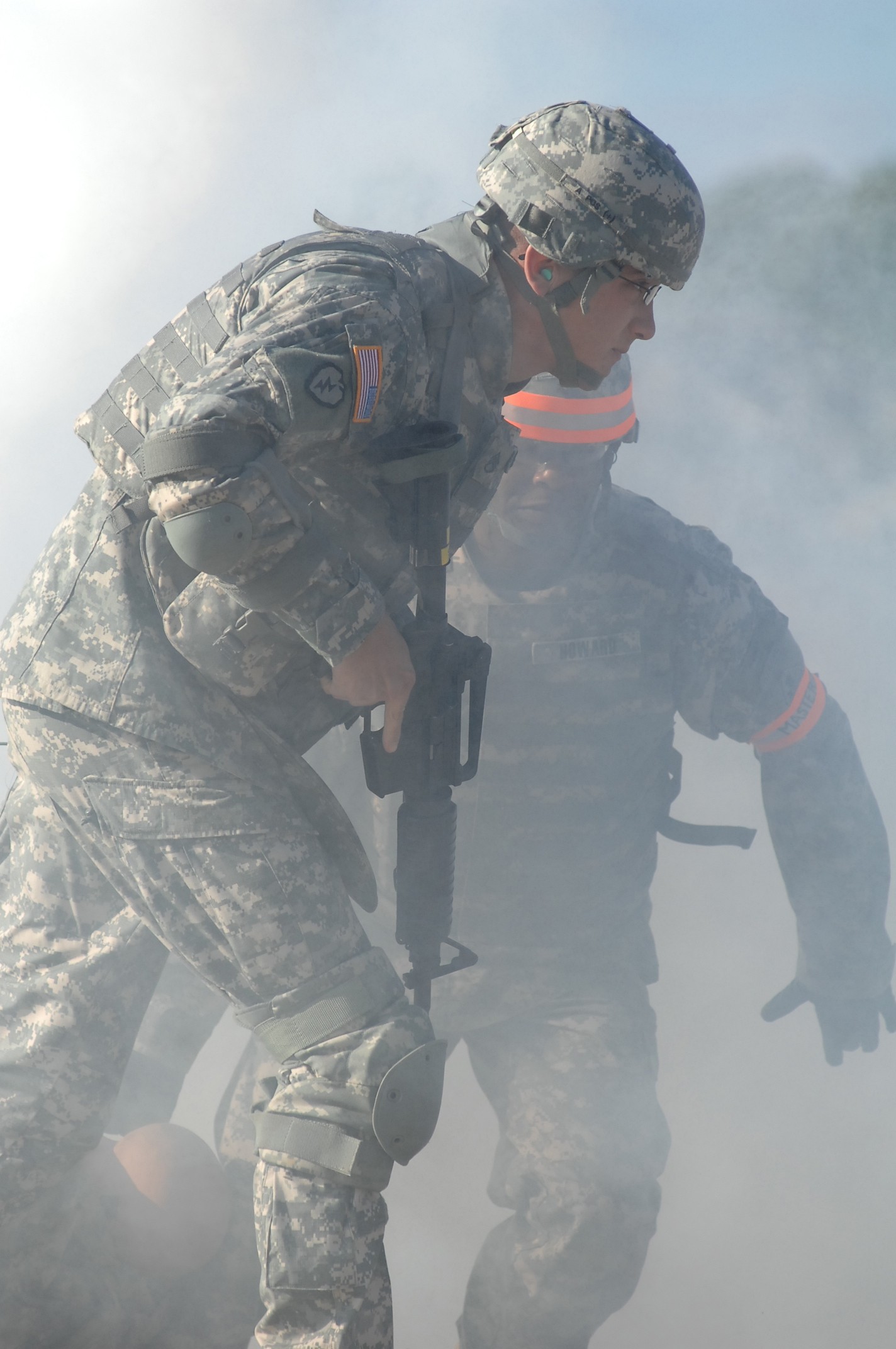
The Department of the Army Noncommissioned Officer and Soldier of the Year "Best Warrior" Competition is a showcase of skills, aptitude and determination.
But beyond every display of proficiency, every instance of fortitude and process of thought, is a unique, one-week training crash-course that encourages Soldiers to further their abilities and share their experiences.
"Yes, they are competing and it is a competition, but at the same time they are learning a lot from the Warrior Tasks and Battle Drills," said Sgt. 1st Class Darnyell Parker, an instructor at the Fort Lee Warrior Training Center where many of the events were held. "Our goal is for every Soldier to leave here with some knowledge, go back to their units and maybe save some lives."
"Best Warrior" started with a board event Sept. 29, the part of the competition in which Soldiers appeared in dress uniforms and were questioned by a panel of senior noncommissioned officers. The events became progressively more difficult at midweek with such events as the physical fitness test and an urban orienteering event in which Soldiers traveled up to 10 miles by foot. A medical evacuation and a series of shooting events at the range challenged contestants on Oct. 2 - 3. The last day of the competition, dubbed "Mystery Day," was reserved for events unbeknownst to Soldiers before the event took place.
The U.S. Forces Command Sgt. Lisa Morales said the week was quite a challenge.
"It was probably one of the hardest weeks I've had in my military career," she said. "It's only one week, but it's one week of constant, non-stop two or three hours sleep per night and then picking up and going the next day. It's definitely physically and mentally challenging because of all the stressors and realism. The training is amazing."
Most of the Best Warrior events are based on the WTBDs. It is a list of 32 individual and 12 collective combat tasks in which Soldiers must maintain proficiency and that is essential to battlefield survival and success in Iraq and Afghanistan.
Sgt. Luke Solorzano, a Soldier representing U.S. Army Pacific, said prior to the event that whether he won or lost, he hoped to better his combat skills and learn more about the operational Army.
"Although we're supposed to be competitive," he said, "I definitely see this experience as a place for me to learn about the military - learn about the Army and the way that it operates."
WTC instructors provided train-ups for all the contestants prior to some of the WTBD-based events. WTC instructor Sgt. 1st Class Ryan Howard said a review of some techniques was necessary and helped many Soldiers to be more competitive.
"Some of the Soldiers knew some things when they got here," he said, "and some didn't. Not everybody here has the same combat-skill level. You might have a band member or you might have someone who works in administration, but when they come to "Best Warrior" competition, we put them through a whole bunch of stress that they may have never gone through."
Spc. Alexander Elkassamani, who competed for the U.S. Army Forces Command, said he has trained on many of the WTBDs prior to the competition but still approached each event and the train-ups with an open mind to pick up the nuances.
"You could learn a new way to tie your boots for a ruck march, where you don't get blisters or you can learn different ways to pack your ruck," the infantryman said. "...you can learn anything and everything about yourself. There's always something to learn."
Over the years, "Best Warrior" has enhanced its status as a competition, growing into an event that fosters the spirit of camaraderie, teamwork and education. Solorzano said he approached the competition with that in mind.
"Whenever I see someone I think I can help, I definitely go out of my way to try to do that," he said, "because nobody is trying to prove that they are better than anyone else; they're just trying the do the best that they can. The more you work together, the better everyone ends up being."
Sgt. 1st Class Steven Kroll, a Green Beret assigned to the U.S. Army Special Operations Command, is part of the Army's unconventional forces. The U.S. Army John F. Kennedy Special Warfare Center and School instructor said the bottom line is to use the "Best Warrior" experience to better prepare for battle.
"I would think that once we go our own way, we would have certainly brought back more than the competitive spirit, but definitely a lot that we can take back to our units and employ downrange when its time to go back downrange."

Social Sharing